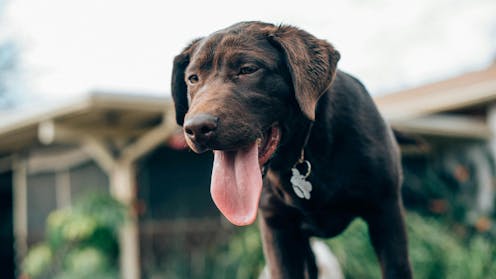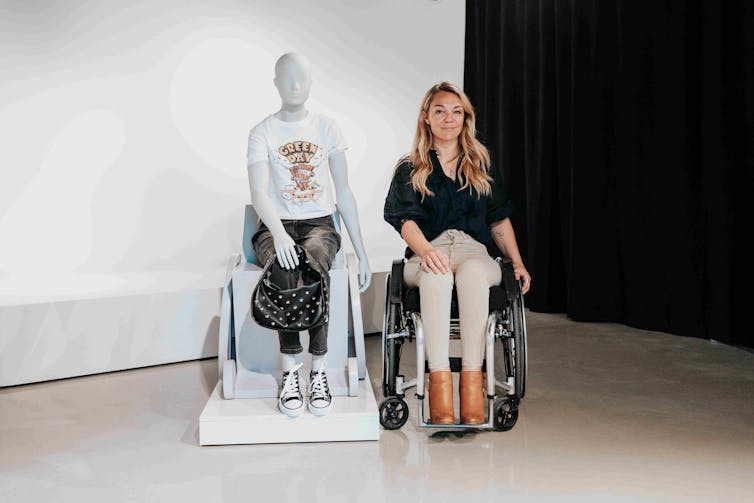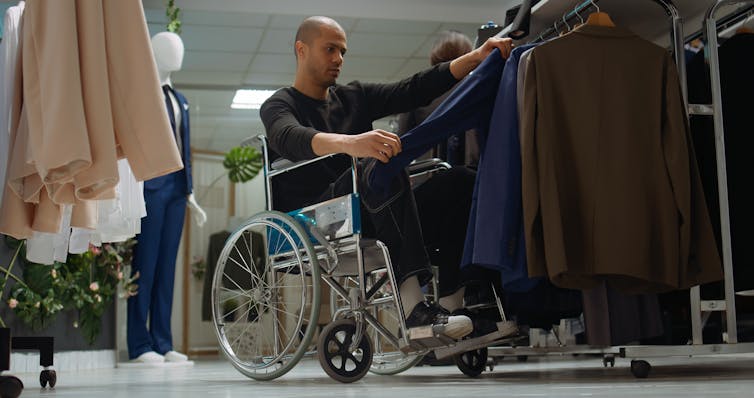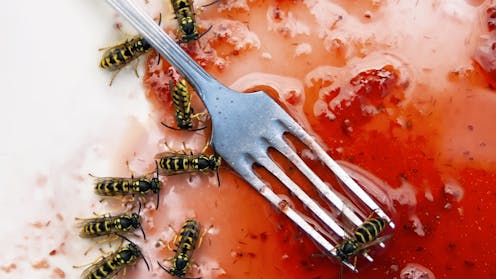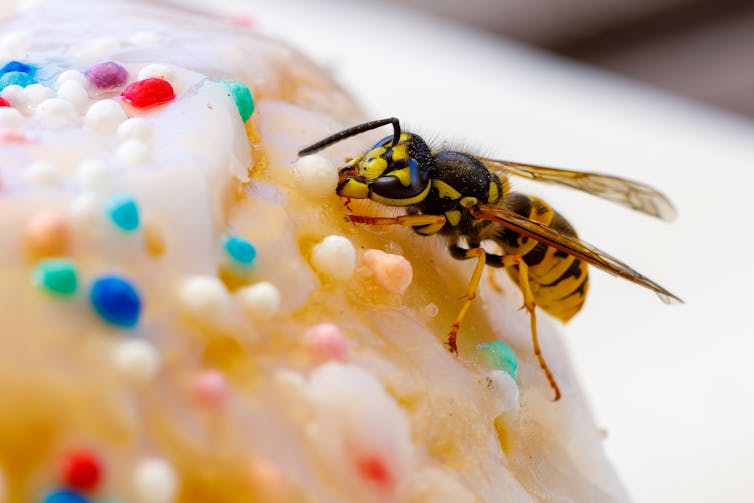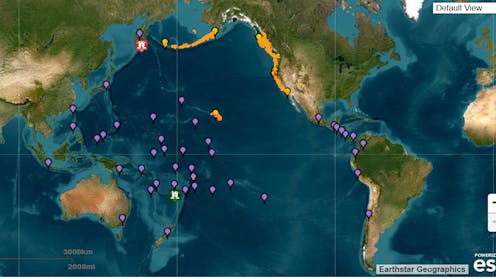Source: The Conversation – (in Spanish) – By Fabian Acosta Rico, Doctor en Antropología Social , Universidad de Guadalajara
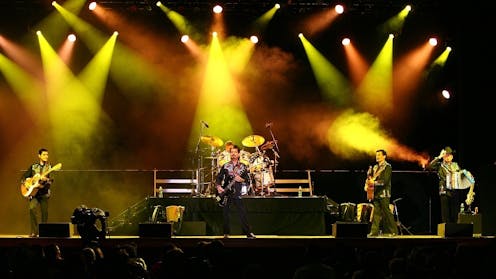
Versa la canción de Peso Pluma “Y pa’ chambear con don Iván / Soy de la gente del Chapo Guzmán / No me muevan que me puedo enojar / Y me les presento, soy el Gavilán”. En estos sencillos versos la referencia y exaltación del exjefe del Cártel de Sinaloa, el Chapo, son claras y directas, como en todo buen narcocorrido.
Pero ¿qué son en verdad los narcocorridos? ¿Expresiones auténticas, no censuradas, de la música regional mexicana contemporánea o panegíricos musicales de la violencia vinculada al mundo de la droga? ¿Qué evidencian de la cultura y la sociedad de México?
Pues dicen mucho: hablan con desgarro y populismo de una añeja rivalidad, oculta en un acto de negación psicoanalítico y colectivo. Una rivalidad del pobre –del hombre‑pueblo– contra el rico –el catrín de dinero viejo– de la que habló hace ya varias décadas el filósofo Samuel Ramos en El perfil del hombre y la cultura.
Versos para una revolución
En la historia cultural de México, el indio era el marginado, despojado injustamente de su tierra y cultura por el invasor español. Inmerso en su realidad rural, era el pobre del campo, resentido contra el rico peninsular de la hacienda y de la ciudad.
Entonces, allá por 1910, llegó la Revolución: el oprimido, envalentonado y bravío, tomó las armas contra su opresor. El caballerango de la hacienda se convirtió en caudillo. Y el caudillo de raíces humildes, quizá por un resentimiento personal, aceptó encabezar a las masas campesinas desarrapadas, tal y como lo retrata Mariano Azuela en su novela Los de abajo.
Los animaba un deseo revanchista: adueñarse de las parcelas que antaño pertenecieron a sus ancestros indígenas y abatir al terrateniente, heredero del otrora encomendero español. Todos convirtieron sus historias juglarescamente en música. Así surgió el corrido como expresión popular, himnos campiranos que narraban las hazañas de los revolucionarios. Aquí está la génesis más arcaica y remota del narcocorrido.
El auge de los narcocorridos
Emparentados como expresiones musicales rancheras, el corrido y el narcocorrido gozan de la misma arquitectura simbólica y narrativa. Ambas, desde distintos contextos históricos, romantizan el ascenso social, la soñada redención del excluido por su decisión –justificada o no– de tomar las armas o de hacer uso de la violencia, la temeridad, la bravuconada.
Antepasado y sucesor exaltan una masculinidad básica y mostrenca: la que aflora en el adolescente que dirime diferencias con sus compañeros de escuela trenzándose a golpes, o que revive el donjuanismo del caudillo idolatrado por las adelitas, midiendo en conquistas o aventuras una hombría tan genital como falocéntrica.
Sin la etiqueta de narcocorrido, una de las primeras canciones inspiradas en traficantes de marihuana, amapola o alcohol –y en toda la cultura orquestada en torno a ellos– fue “El contrabando del Paso” (1934).
Décadas después, el grupo Los Tigres del Norte dio popularidad y proyección al narcocorrido moderno. “Contrabando y traición” (1974), además de ser todo un éxito en su momento, es ya un clásico del género: narra la historia de Camelia la texana, una mujer dedicada al tráfico de droga que traiciona a su amante.
Del mismo grupo, una de sus canciones más icónicas –que marcó un parteaguas– fue “La Banda del Carro Rojo” (1975). ¿De qué trata? Del enfrentamiento entre una banda de traficantes y agentes de la policía. La clásica historia de policías contra delincuentes; invirtiendo protagonismos, resalta la bravura y el arrojo del narcotraficante que vive siempre al límite.
El corrido tumbado
Con el nacimiento y la popularización de los corridos tumbados (un género que fusiona los originales corridos con la música urbana), los temas musicales sobre capos y señores de la droga han vuelto a ponerse de moda. Destaca en esta nueva tendencia Peso Pluma con canciones como “PRC” (junto a Natanael Cano), que alude metafóricamente al trasiego de cocaína.
Este y otros temas han catapultado la carrera de este cantautor dentro y fuera de México, consolidándolo como uno de los principales exponentes del nuevo regional mexicano. “Siempre Pendientes”, junto a Luis R. Conriquez, es otro de los temas que exaltan el estilo de vida, la cultura, los códigos y el ethos del narcotraficante.
Junto con Peso Pluma, otros renombrados exponentes del género son los ya mencionados Natanael Cano y Luis R. Conriquez, además de Fuerza Regida y Los Alegres del Barranco, quienes recientemente han estado en el ojo del huracán.
En su presentación del 29 de marzo de 2025, en el Auditorio Telmex de Zapopan, Jalisco, proyectaron imágenes de Nemesio Oseguera “El Mencho”, líder del Cártel Jalisco Nueva Generación, mientras interpretaban su corrido “El del Palenque”.
La reprimenda social y mediática no se hizo esperar hasta escalar a un tema judicial: tuvieron que cancelar conciertos, las autoridades estadounidenses les retiraron sus visas y se polemizó mucho sobre cómo este grupo y otros similares hacen apología del delito en una sociedad enlutada por los crímenes del narco.
Una búsqueda aspiracional
Como ocurrió con los corridos revolucionarios, los actuales narcocorridos no son un producto espontáneo, surgido de la nada o de la imaginación febril; al contrario, expresan las fantasías aspiracionistas que germinan en una sociedad de consumo desigual. Para servirse en grande en el deporte de las compras hay que tener dinero en la cartera o una buena tarjeta con fondos ilimitados; es decir, hay que ser un señor de la droga o estar bajo su férula.
Todo pueblo tiene sus héroes e ídolos, cuyos pedestales hablan de las condiciones morales, sociales y culturales de sus seguidores. En el México de comienzos del siglo XX destacó el caudillo como el hombre que sacaría de la pobreza a las clases marginales. En tiempos del famoso milagro mexicano se mitificó al charro‑cantor y al luchador: Pedro Infante y El Santo.
¿Quiere recibir más artículos como este? Suscríbase a Suplemento Cultural y reciba la actualidad cultural y una selección de los mejores artículos de historia, literatura, cine, arte o música, seleccionados por nuestra editora de Cultura Claudia Lorenzo.
En este posmoderno México, los pobres y marginados –según las últimas mediciones, el 36,3 % de la población– sueñan con una vida sin carencias y, por qué no, con lujos. Muchos jóvenes se dejan atraer por el canto de sirena (el narcocorrido) y, seducidos, se proponen como meta de vida ser un capo, un díler (vendedor directo de droga), una buchona (mujer glamurosa, esposa o amante de un capo) o, ya de menos, un halcón (informante callejero del hampa).
Los narcocorridos no son una causa sino un síntoma. Gobiernos estatales como el de Sonora, y ayuntamientos de ciudades del norte de México –Culiacán, Sinaloa; Juárez, Chihuahua; Monterrey, Nuevo León– han propuesto prohibirlos. Pero prohibirlos no servirá de nada. Para acabar con ellos hay que transformar radicalmente la sociedad: abatir las desigualdades sociales, la pobreza y la ignorancia. En mejores condiciones de vida, en una sociedad volcada al progreso, el niño soñará con ser un Tony Stark: superhéroe, inventor y magnate.
![]()
Fabian Acosta Rico no recibe salario, ni ejerce labores de consultoría, ni posee acciones, ni recibe financiación de ninguna compañía u organización que pueda obtener beneficio de este artículo, y ha declarado carecer de vínculos relevantes más allá del cargo académico citado.
– ref. ¿Por qué la gente sigue escuchando narcocorridos? – https://theconversation.com/por-que-la-gente-sigue-escuchando-narcocorridos-258371


